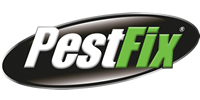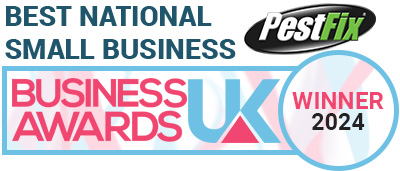Introduction
This guide applies only to anticoagulant rodenticides and their use by professional users in all situations.
All anticoagulants act in the same manner; they disrupt the blood clotting mechanism. If a sufficiently high dose is present, death is caused by fatal haemorrhage. The main difference between the anticoagulant rodenticides' active ingredients is their toxicity.
Anticoagulants approved for use in the United Kingdom contain Difenacoum, Bromadiolone, Brodifacoum, Flocoumafen, and Difethialone. They are only to be used indoors and outdoors around buildings. Some products will be indoor only; this will be stated on the label.
All pesticide legislation requires that the conditions contained in the Statutory Box on the label must be complied with. The directions for use and other labelling guidance should also be followed to ensure legal compliance, as is the case with all pesticides.
All anticoagulant rodenticides must be used in a manner to minimise hazards and maximise effectiveness.
Definitions
Before using anticoagulant baits the phrases found in the statutory box of product labels should be read, understood and complied with. These phrases include the following:
“For indoor use only”. This condition applies only to baits containing Brodifacoum of Flocoumafen. The UK Regulatory Authorities have set a condition not imposed by other regulators. It is their perception that the potency of these compounds constitutes a greater hazard to non-target species than that of other rodenticides. Their particular concern is the possibility of the secondary poisoning of predators such as hawks and owls, and scavengers such as dogs and crows. With the possible exception of warfarin, all anticoagulants can build up in the livers of animals consuming a significant number of poisoned rodents. The possibility of secondary poisoning should always be of concern when using any anticoagulant.
“Indoors” is defined as: Situations where bait is placed within a building or other enclosed structure. Covered drains and sewers are considered to be indoor situations. The essential element in “enclosed”. This really means behind closed doors to ensure that access by non-target animals is prevented. Furthermore, bait may only be laid where the target rodents are living or feeding predominantly with in that building or structure. Care should be taken to ensure that the “indoor use” restriction is complied with when using baits containing Brodifacoum or Flocoumafen. “Professional Operators” This no longer means persons whose income is derived largely from pest control. i.e. pest control operators. It is defined as people who are required to use pesticides as part of their work and who have received appropriate information, instruction and training. Professional pest control operators, farmers or game keepers should not consider using anticoagulant baits unless they are assured, and can prove that they have received appropriate information, instruction and training in their safe and effective use.
Rodent Control. It may seem obvious, but anticoagulant baits are approved in the UK for use only against commensal rats and mice. They must never be used against other species such as squirrels or rabbits, the single exception being squirrel control using a warfarin bait prepared from a specific concentrate under defined rules and conditions.
Planning and recording
A thorough survey of the infested site before treatment begins is an essential key to success when using any rodenticide. When brodifacoum or Flocoumafen are to be used, particular note should be taken of where rodents are living and feeding.
Draw up a simple plan of location list identifying areas of particular concern pertinent to the site and retain this on file.
Note environmental changes that could be made to reduce the attractiveness of the site to rodents in future. Usually this will involve rodent proofing, removing rubbish and weeds providing harbourages and cover.
Do not clear the site prior to treatment. This only disturbs the rodent population, making bait acceptance more difficult to achieve.
As far as possible remove obvious food such as spilled grain and cover any food sources. The Control of Substances Hazardous to Health Regulations 1999 (COSHH) require that a COSHH assessment be undertaken. Note that these regulations relate only to hazards to humans. A generic COSHH assessment may not be adequate if conditions on the site indicate particular risks, for example, where children or special needs persons might gain access, or spilled bait could contaminate food.
Users should pay particular attention to the potential for non-target species gaining access to the bait or to poisoned rodent bodies. The factors making the site compliant with the INDOOR USE ONLY condition should be recorded if brodifacoum or Flocoumafen are to be used. A recorded environmental risk assessment may be advisable on sensitive sites, for example where birds of prey or endangered species are present.
The justification for using the chosen anticoagulant bait in preference to other products should be documented.
The owner or occupier of the site should be notified before the treatment begins. They should be informed of basic precautions and what action to take in the event of an accident or other incident as directed by the label. They should be advised or the procedure to be followed in the event of bait spillage or the discovery of rodent bodies. The need to prevent interference with baits by staff or visitors should be emphasised. They should be advised of the bait points.
A record of all bait points and the amount of laid bait should be maintained during the treatment, Note the activity at each bait point, including any missing or disturbed baits as the treatment progresses.
Application and Servicing
Always follow the label for the size and frequency of bait points and the advice given regarding the frequency and number of visits to the site.
Where the risk assessment or treatment records show that more visits are required, then those visits should be made as frequently as is considered necessary. Daily inspection may be required in some circumstances.
Bait stations should be appropriate to the prevailing circumstances. They should provide access to the bait by rodents, while reducing the risks of non-target access and interference by unauthorised persons. They should protect the bait from contamination by dust or rain. Their design, construction and placement should be such that interference is minimised.
In some cases burrow baiting may be possible but only where access by non-target animals is assured and, when using brodifacoum or Flocoumafen baits, it is obvious that any burrows do not extend beyond the enclosed structure.
At each visit, baits should be replenished according to the product label and a thorough search made to ensure that bodies and any spilled bait are removed and disposed of safely. Records or such visits should be maintained.
In most cases, any anticoagulant bait should have achieved control within 35 days. Should activity continue beyond this time, the likely cause should be determined and documented. If bait continues to be consumed without effect, a more potent anticoagulant should be considered. If bait take is poor relative to the apparent size of the infestation, consideration should be given to re-siting the bait points and possibly changing to another bait base, and other environmental changes.
Baits should always be stored according to the product label.
Baits should be used with regard to good working practices and record keeping that is relevant to the safe and effective use of all rodenticides.
Termination
On completion of the treatment, records should be updated to signify that the infestation is controlled and that, as far as is reasonably practical, all sites have been taken to ensure that the site is now free of rodenticide bait and poisoned rodent bodies.
All bait, bait stations and rodent bodies should be removed from the site and disposed of safely, usually by burning or burying according to the label.
When burning bodies or bait residues, it is essential that this is done in a safe manner using a fire sufficiently hot to reduce the residue to ashes. Do not leave the vicinity until you are sure that this has occurred.
When burying bait, bait containers or carcasses, they should be buried at least 50cm (18 inches) deep in undisturbed ground. Refill soil should be well compacted. Never bury pesticides where there is a risk of contamination of water supplies, watercourses, rivers or streams.
Post Treatment Action
All records of the treatment should be reviewed and filed. Frequent visits to the site and the initial assessment will have revealed those environmental changes necessary to reduce the recurrence of infestation. Normally these would include recommendations to rodent proof the structure as far as is possible, to remove rubbish, weeds providing harbourages and cover for rodents and to remove or enclose potential rodent food sources. The objective is to reduce the rodent holding capacity of the environment. i.e. to make it less rodent friendly.
A copy of your recommendations should be provided to the owners or occupiers of the premises and discussed with them.













